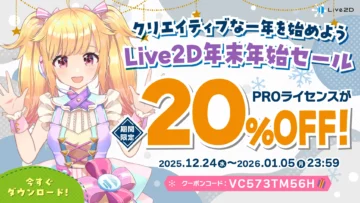【Report】Why Streamers Choose This Soundproof Room: Yamaha “Cefine NS Custom Base Model” — What’s It Really Like?
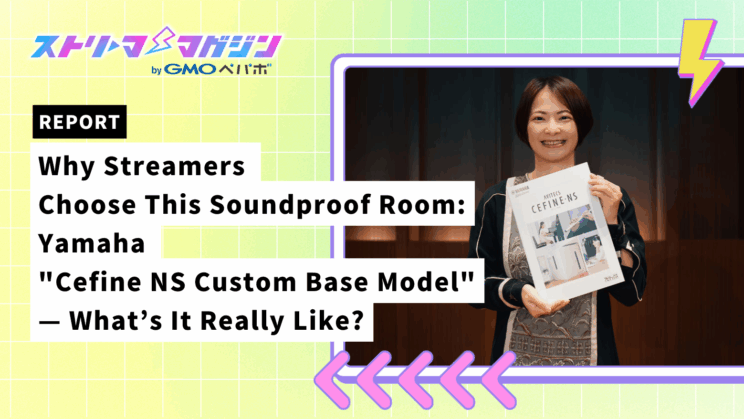
Index
- What is Cefine NS?
- How Is a Soundproof Room Delivered? From Purchase to Installation
- How Soundproof Is the Cefine NS?
- Customize the Cefine NS for Better Usability
- Is It Worth It? The Cost vs. Moving Twice
- Still Thinking About It? Here’s Our Message to Streamers
- Curious? Visit the Official Website for the Latest Info!
Many streamers struggle with audio-related issues such as holding back their energy when they want to hype up the moment, dealing with unwanted background noises that affect sound quality, and worrying about personal information leaking through sound leakage.
Yesterday, while I was shouting during my game stream, someone from the other side of the wall yelled, “Nice kill!”
Once, someone commented that they liked how the sound of my washing machine spinning blended with my BGM — said it felt kind of trance-like.
Yamaha’s soundproof room, Cefine NS, offers a comprehensive solution to these common live streaming challenges.
We spoke with Ms. Kazuna Oyama, a representative from the AVITECS team in the Keyboard Strategic Planning Division at Yamaha Music Japan Co., Ltd., to get insights on Cefine NS’s capabilities and what streamers should know before installation.
※As of now, the Cefine NS is available only in Japan through authorized Yamaha dealers.
What is Cefine NS?
── What was the original purpose behind developing Cefine NS?
It was primarily developed to allow people to enjoy playing instruments or taking piano lessons at home without worrying about noise. While maintaining a high level of soundproofing, it was designed for casual use—even in rental properties.
── And that led to the creation of the Custom Base Model tailored for streamers.
Exactly. Over the past few years, we began hearing from VTubers and singers using Cefine NS for their streams. That feedback led us to consider creating a model better suited for streaming environments.
In fact, we’ve seen a growing number of customers visiting retail stores specifically to purchase it for streaming—not music. At one point, up to 40% of visitors were looking for soundproofing solutions without needing it for instruments. With the rise of remote work and streaming during the pandemic, demand for private, quiet spaces has skyrocketed.
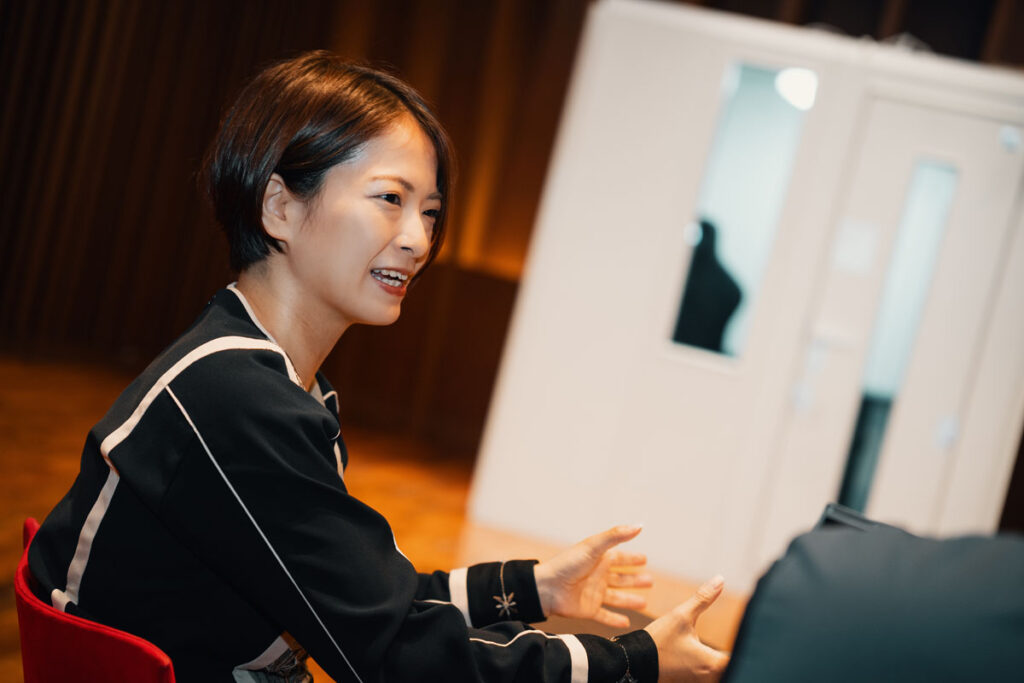
── Specifically, what changes were made to better suit streamers?
While maintaining the original model’s soundproof performance, the Custom Base Model allows flexible customization for different streaming styles. For example, we intentionally removed the standard acoustic panels so users can tailor the sound environment with their own absorption materials. We also made the walls flatter to accommodate green screens, and added cable ports for easier wired equipment setup.
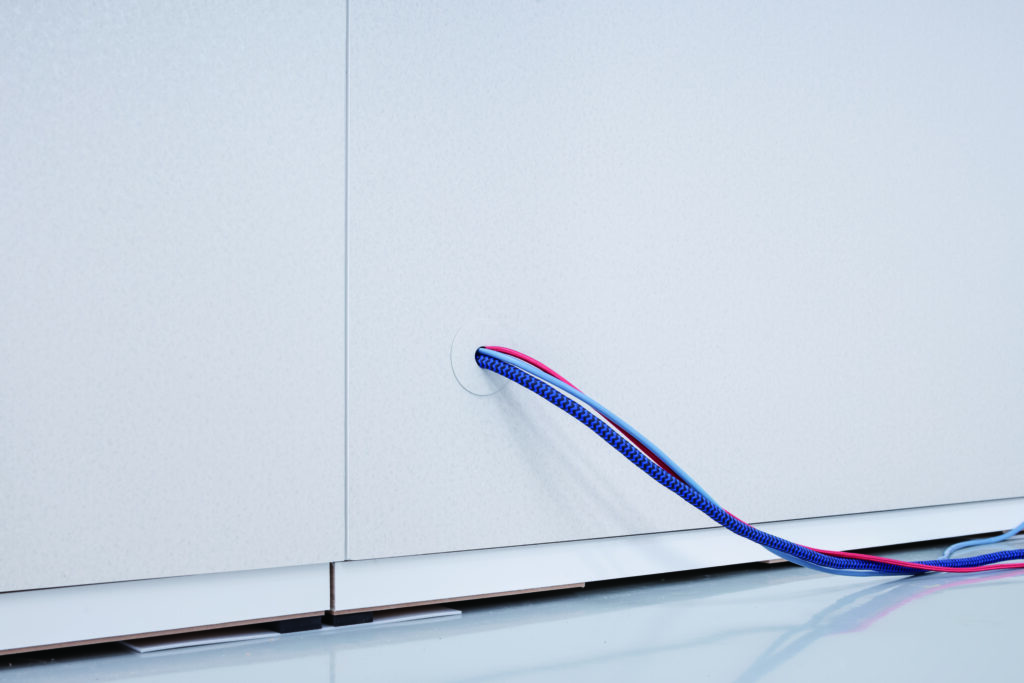
── When people hear “Custom Base,” they might imagine selecting from optional add-ons, but this sounds more like a blank slate for users to build on.
Exactly. Rather than defining every detail, we’ve left the sound environment open to user customization. That’s the core concept behind this model.
── By the way, what role do the acoustic panels in the standard model play?
The panels are designed to shape the acoustics of the room. They include textured components on each side to help control how sound spreads, and a removable center absorber that allows users to switch between a “dead” sound (minimal echo) and a more “live” feel with natural reverberation. This helps avoid the overly echoey effect that can make streams sound like they’re coming from a bathroom.
Inside the panels are tubes of various lengths that help balance different sound frequencies. This setup mimics the acoustic diffusion seen in concert hall walls, but adapted for compact spaces.

── That makes sense. So for vocalists, the standard model might still be the better fit.
Yes. For content where sound quality and tone are essential—like singing or instrumental performances—the standard model with acoustic panels is likely the better choice.
── And who would benefit most from the Custom Base Model?
The Custom Base Model is ideal for streamers focused on talk-based content, such as gaming commentary or casual chats.
It’s also great for users who want full control over their setup, including the flexibility to add sound-absorbing materials or rearrange equipment. Whether you’re using a green screen or want clean cable management, this model gives you that freedom.
Gotta hand it to Yamaha — it’s impressive how they’ve designed it not just for soundproofing, but also for acoustic quality.
Yeah, hearing all that just makes me want one even more. But when it comes to actually buying it, all these questions come up — like “How does it get delivered?” or “Is the assembly hard?”
How Is a Soundproof Room Delivered? From Purchase to Installation
We asked Yamaha all about the process of getting a Cefine NS installed—and what you should know in advance!
Try It Out and Consult at a Music Store
── If I want to get a Cefine NS, what should I do first?
Start by visiting Yamaha’s official website to find a nearby authorized dealer. There, you can experience the actual soundproofing and get a sense of the room size. Once you’ve selected a model, the next step is an on-site assessment at the installation location.
── What’s the minimum room size needed for installation?
We often get asked, “Will it fit in a 6-tatami room?” But even if two rooms have the same size on paper, their shapes and ceiling heights can vary—especially in apartments with beams or low ceilings. So it’s not just the floor area that matters.
That’s why we always recommend an on-site visit to assess the exact space and confirm feasibility before making any decisions.
── What if the building is still under construction or I haven’t moved in yet?
We can work with floor plans in those cases. Delivery usually takes about 3 to 4 weeks, depending on stock availability. If you plan to move in and use it right away, we recommend contacting us early to ensure a smooth setup.
── Should I mention that I’m a streamer when I inquire?
Yes, definitely. It helps us recommend the Custom Base Model or suggest adjustments like the placement of cable ports tailored to streaming needs.

Delivery Route and Installation Feasibility
── Do you check the space and delivery route before installation?
Yes. During the site visit, we’ll inspect the route and space for installation to ensure there are no issues. Panels are typically about 0.9 meters wide and 2–2.2 meters high. While the number of panels varies by model, their size is standardized. Most elevators can accommodate them, and we can also carry them via stairs if no elevator is available.
── What about the weight? Is installation on the second floor of a wooden house possible?
It depends on the building’s structure. Yamaha generally doesn’t recommend installing on the second floor of wooden houses. While the floor won’t collapse, some sagging could occur depending on the construction. Please check with your builder (for houses) or your property manager or landlord (for apartments) to confirm installation feasibility.
── Should I move furniture before delivery?
Yes. Please move desks, chairs, and other furniture out of the way beforehand. While a certain amount of space is required, even studio apartments can accommodate the room if you reposition larger items like beds. If you have heavy equipment you can’t move on your own, let us know in advance.
Delivery and Assembly
── How is the room actually delivered and set up?
Panels are delivered to the room where the soundproof booth will be assembled. If there’s enough space, everything can be unpacked and set up on-site. If space is tight, some parts may be unpacked in the hallway or near the entrance and brought in piece by piece. Even a 6-tatami room is generally no problem.
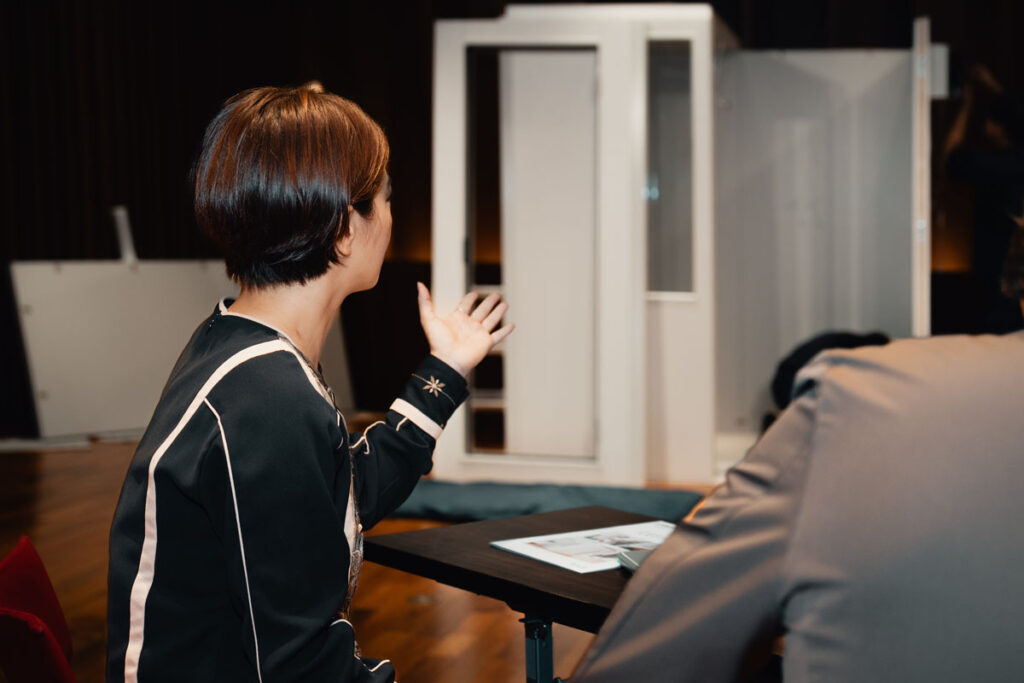
── How long does the assembly take?
Depending on the size, most setups take 2–3 hours, or up to half a day. If you request additional options like an air conditioner or fire alarm, it may take longer.
── Anything to keep in mind during setup?
If you plan to bring furniture into the room afterward, make sure it fits through the door once the booth is assembled.
After-Sales Support
── What if I move to a new home later?
We offer professional relocation services. Contact the dealer where you purchased the room to make arrangements.
── Is regular maintenance required?
Routine maintenance isn’t necessary, but components like ventilation fans may need replacement every 10 to 15 years.
── What if the store I bought it from has closed?
Just contact Yamaha directly. We’ll help connect you with a nearby service provider for continued support.
That really cleared up my worries and gave me a much better picture! Still, I’d love to actually see how the setup works.
For anyone feeling the same, we’ve put together a video that shows the entire process—from delivery to assembly. The second half also covers the soundproofing performance, so if you’re thinking about getting one, be sure to check it out!
※Caution: This video contains loud audio. Please adjust your volume before playback.
How Soundproof Is the Cefine NS?
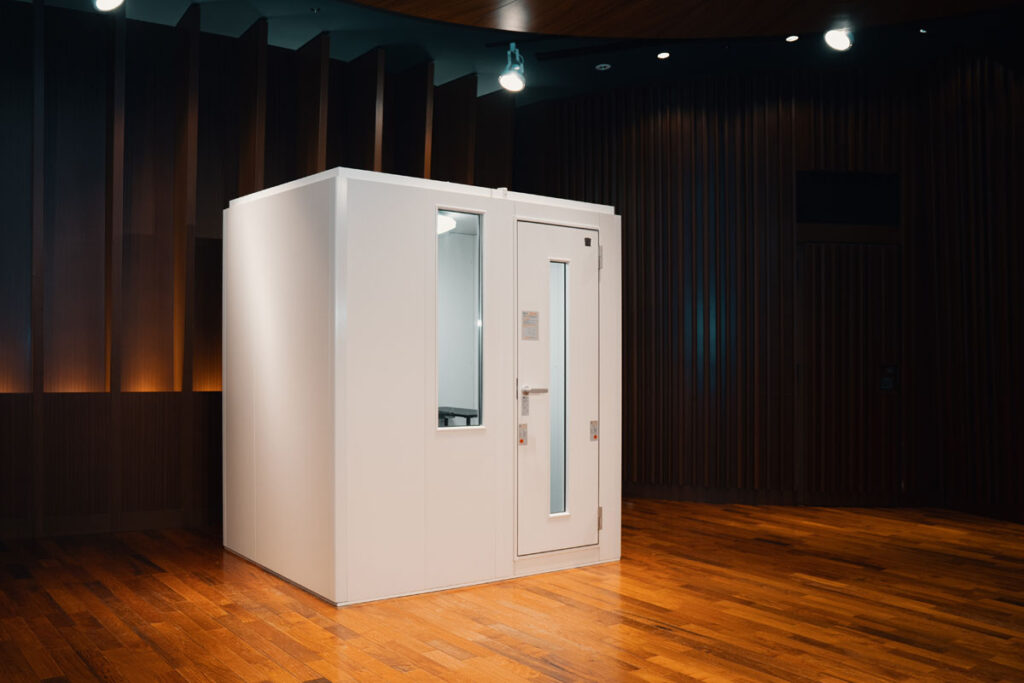
── The Cefine NS Custom Base Model (1.5 tatami mats) you’ve assembled is listed as “Dr-35.” What does that mean?
Dr-35 indicates the room’s sound isolation performance. For example, piano sound typically measures 80–90dB. With Dr-35, that sound is reduced to around 55dB—roughly the volume of normal conversation.
── So from outside the booth, the sound is as faint as a TV in the next room—not noticeable at all?
Exactly. People often imagine soundproofing means “0dB,” but in reality, background noise such as air conditioning or outside traffic is always around 30dB. Even in theaters or recording studios, ambient noise can be around 20dB. With Dr-35, the sound is reduced enough to be negligible in daily life.
── That level of performance should help prevent identity exposure during livestreams, even if your voice gets loud.
Yes. Even shouting would only be heard as regular conversation volume in the next room. While building structure and time of day do matter, it’s generally not a problem under normal use.
── What about streaming late at night?
It depends on your building. In reinforced concrete buildings with strong sound insulation, night-time streams are no problem. Even in wooden structures, external noise leakage is significantly reduced.
── That’s great. Less noise leaking out means less chance of doxxing for streamers.
Absolutely. Not only is your sound contained, but outside noise is also blocked—boosting both quality and peace of mind during streams.
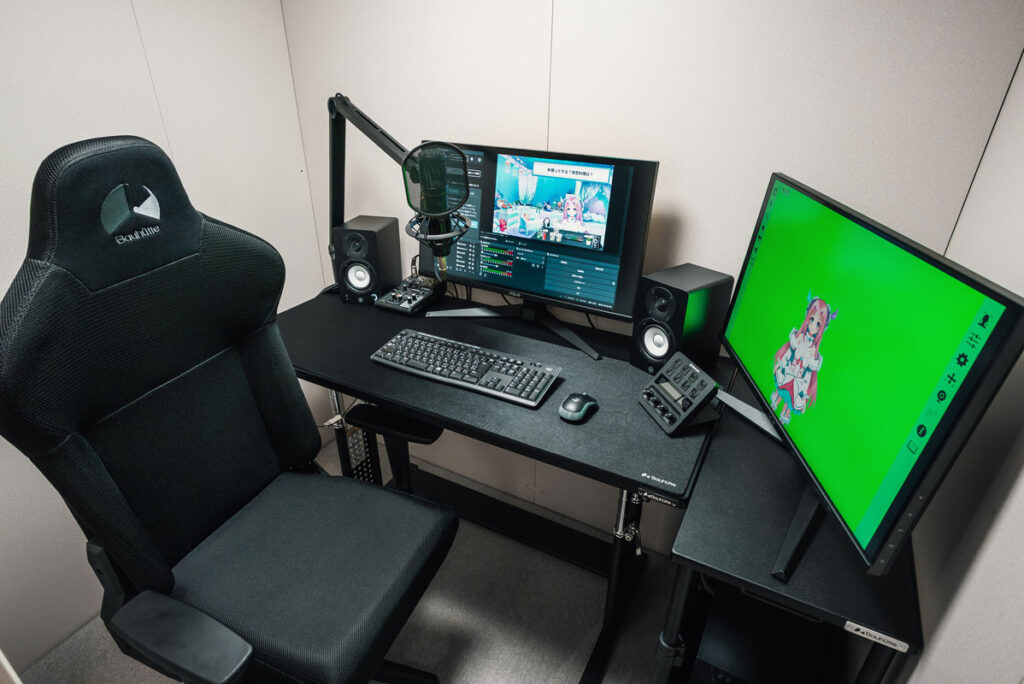
Products provided by Bauhutte:
Gaming Desk HD BHD-1200HDM-BK /
Height-Adjustable L Desk BHD-670H-BK /
Gaming Chair G-520-BK
Customize the Cefine NS for Better Usability
── Do I need to install lighting myself?
Yes, though optional lighting kits are available. All models come with a standard rosette fitting, so you can hang most off-the-shelf lighting fixtures as long as they’re compatible.
── Can LED bars or lights be installed on the walls for better lighting during streams?
The walls are made of particleboard—not suitable for standard wall pins or heavy fixtures. Screws can also compromise sound isolation. We recommend using clamp-mounted or adhesive LED lights instead.
── Can I install an air conditioner inside?
Yes, models 1.2 tatami or larger support standard home AC units. Installation can be arranged along with delivery. Since the room is sealed and heat builds up quickly—especially with streaming PCs—we highly recommend including AC from the start.
Adding an AC later can be more complex due to disassembly and limited pipe routing, so it’s best to plan ahead during purchase.
── Will darker or neon-themed color options be available for streamer aesthetics?
Currently, no black versions are planned, but we may consider it if demand increases. At Tokyo Game Show, we showcased a custom version with interior vinyl and indirect lighting. Some users create their own custom interiors as well.
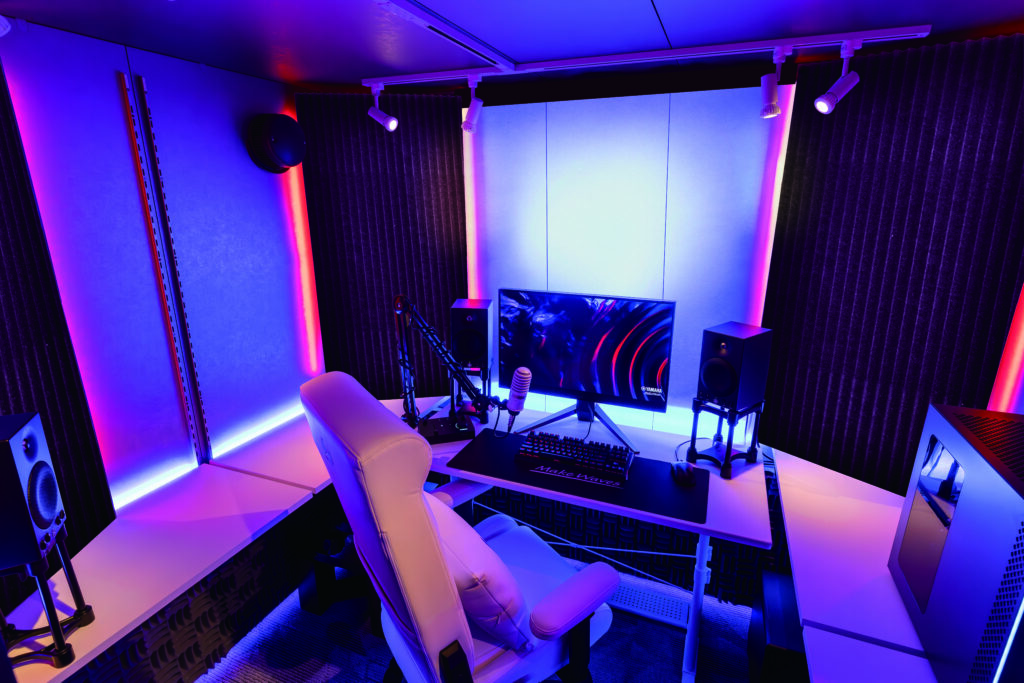
── Can I turn an entire room into a soundproof booth?
Some customers request full-room installations. In such cases, panels must be installed at least 5cm from walls to avoid sound vibration transfer. Space for doors, ventilation, and AC piping must also be considered.
Smaller models (0.8–1.5 tatami) have outward-opening doors, while larger ones (2+ tatami) can be built with inward-opening doors. In some setups, the sound booth begins right at the room entrance, optimizing limited space.
── Can I use Wi-Fi inside the Cefine NS?
Yes. Wi-Fi works, though the signal may weaken slightly due to wall thickness. For reliable streaming, a wired connection is recommended. Also, note that sounds like doorbells may not reach inside—some music schools use wireless intercoms for that reason.
Is It Worth It? The Cost vs. Moving Twice
── The Cefine NS Custom Base Model (1.5 tatami) costs ¥913,000 (tax included), which may seem steep—but over four years, that’s about ¥19,000/month. How durable is it really?
The booth is designed to last 10–20 years. Some users still use older models purchased two decades ago. Music schools use them daily with heavy foot traffic—four years of use is no issue at all.
── So using it for 8 years would mean under ¥10,000/month—about the same as a gym membership. As a long-term investment in streaming, it seems quite realistic.
Exactly. For streamers, noise issues are a common concern—especially at night. We’ve met creators who’ve had to move multiple times due to noise complaints. One even moved three times. Each move can cost ¥400,000–¥600,000 in initial fees, making it unsustainable. With a soundproof booth, you can stream freely and professionally, without stress.
Still Thinking About It? Here’s Our Message to Streamers
── Any final message for those considering a purchase?
Many streamers use Yamaha soundproof booths and report better quality and more freedom to speak without worrying about others.
Though commonly associated with musicians, we get many inquiries from people using them for streaming or remote work. Don’t hesitate to drop by a store—even just to look or ask questions.
At this point, it feels like the Cefine NS is the one waiting for me! I’m heading out for a consultation right away!
Just make sure to soundproof that inner voice too—don’t want to confuse the store staff!
Curious? Visit the Official Website for the Latest Info!
The Cefine NS offers a private studio space to support your streaming or creative work in comfort and confidence. Eliminate noise worries and boost your content quality—why not experience Yamaha’s soundproof room for yourself?
For more details about Yamaha’s Cefine NS soundproof rooms, please visit the official site below:
https://jp.yamaha.com/products/soundproofing/ready-made_rooms/index.html







